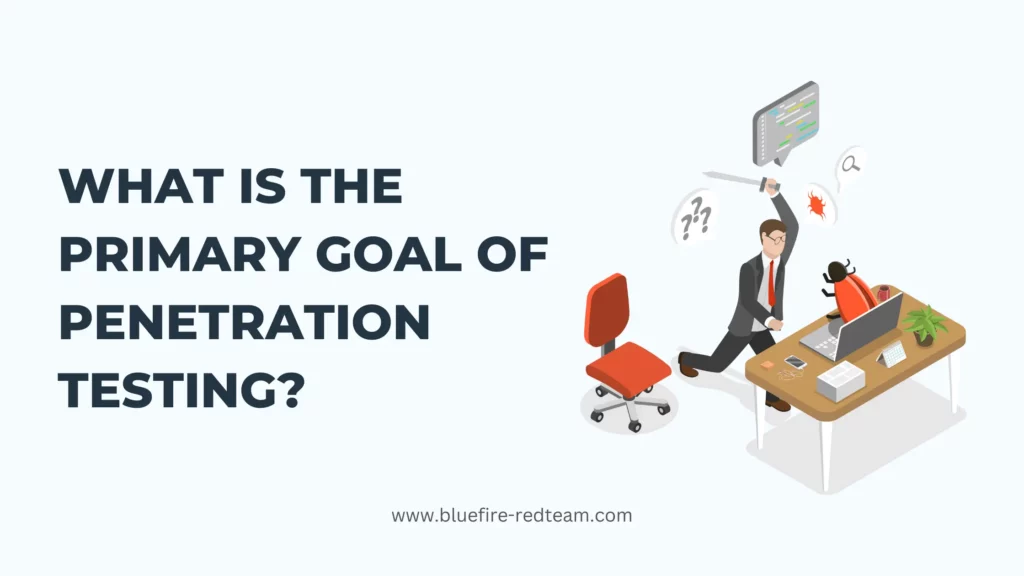I. Introduction
In the ever-evolving digital landscape, cybersecurity stands as a paramount concern for both individuals and organisations. Having spent over a decade working in the field of cybersecurity, I’ve witnessed firsthand the critical importance of penetration testing, often referred to as ethical hacking. It’s not just a buzzword; it’s a powerful strategy that plays a pivotal role in safeguarding systems against cyber threats. In this article, I aim to share our experiences and insights into the world of penetration testing, shedding light on its primary goal and why it’s indispensable in today’s cybersecurity landscape.
II. What Is Penetration Testing?
At its core, penetration testing is about understanding how cybercriminals think and operate. It’s not just a checklist of vulnerabilities; it’s a simulated attack on your systems, aiming to uncover weaknesses. In our years of performing penetration tests, I’ve come to appreciate its primary goal: to proactively assess security measures and provide a detailed roadmap for improvement. This goes beyond merely pointing out vulnerabilities; it’s about demonstrating how those vulnerabilities can be exploited. This firsthand experience is crucial in helping organisations make informed decisions to strengthen their defenses.
III. Objectives of Penetration Testing
Through our extensive work in the field, I’ve witnessed the multifaceted objectives of penetration testing. It’s not just about finding vulnerabilities; it’s about evaluating security controls, assessing incident response capabilities, ensuring compliance, and enhancing security awareness. These objectives form the foundation of a comprehensive cybersecurity strategy, helping organisations stay one step ahead of malicious actors.
IV. Benefits of Penetration Testing
In our experience, the benefits of penetration testing are manifold. It’s not just a checkbox for compliance; it’s a proactive approach to risk management. Through simulated attacks, organisations gain critical insights into potential consequences and can take immediate steps to mitigate risks. It’s about more than just data protection; it’s about saving costs, enhancing customer trust, and ensuring long-term security.

V. Penetration Testing Methodology
In our day-to-day work at Bluefire Redteam, we follow a meticulous methodology that comprises five essential phases. From reconnaissance to covering tracks, every step is carefully planned and executed. It’s not just about finding vulnerabilities; it’s about providing organisations with actionable insights that empower them to address vulnerabilities effectively. The methodology ensures that I leave no stone unturned in helping organizations fortify their defenses.
VI. Real-World Examples
Let me share a recent experience that vividly illustrates the impact of penetration testing. During an engagement with our fintech client, we uncovered critical vulnerabilities that could have granted unauthorised access to their production database. Through our rigorous testing process, we not only identified these vulnerabilities but also provided actionable recommendations. The client’s acknowledgement of the significant role our testing played in enhancing their overall security was a testament to the real-world value of penetration testing. Read more.
VII. Common Misconceptions
Let’s clear up some wrong ideas about penetration testing:
- “Only big companies need penetration testing.” No, all companies can benefit, no matter their size.
- “You only need to do penetration testing once.” No, cybersecurity is a constant process, and you need to test regularly.
- “Penetration testing is only about finding problems.” It also checks security controls, responds to issues, and raises security awareness.
- “Penetration testers are the same as hackers.” Not true. Penetration testers work legally and with permission from the organisation.
- “Penetration testing guarantees 100% security.” It helps, but organisations must keep improving security.
By getting rid of these wrong ideas, organisations can make better choices and focus on cybersecurity.
VIII. Importance of Ethical Hacking
Ethical hacking, also known as white-hat hacking, is a key part of cybersecurity. Certified experts pretend to attack computer systems to find problems. They do this with the organisation’s permission to find security risks and make things safer. Ethical hackers also help employees understand security better and improve overall cybersecurity. By using ethical hacking, organisations can protect their digital stuff and stay ahead of cybercriminals.
IX. Challenges in Penetration Testing
Penetration testing can be tricky. Organisations need to deal with issues like figuring out what to test, managing time and resources, handling false alarms, making sure tests don’t cause problems, and following the law. But by understanding and solving these issues, organisations can make sure that penetration testing is done well and helps make their cybersecurity stronger.

X. Conclusion
In conclusion, penetration testing isn’t just a theoretical concept; it’s a dynamic and essential practice in today’s cybersecurity landscape. It’s about more than just identifying vulnerabilities; it’s about providing actionable insights and empowering organisations to safeguard their digital assets. Our years of experience in this field have taught us that prioritising penetration testing is not an option—it’s a necessity. By doing so, organisations can fortify their defenses and minimise the ever-present threat of cybercriminals. Reach out to us for your penetration testing needs.


